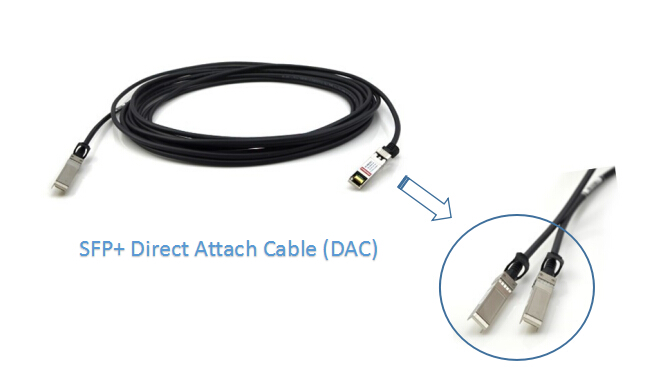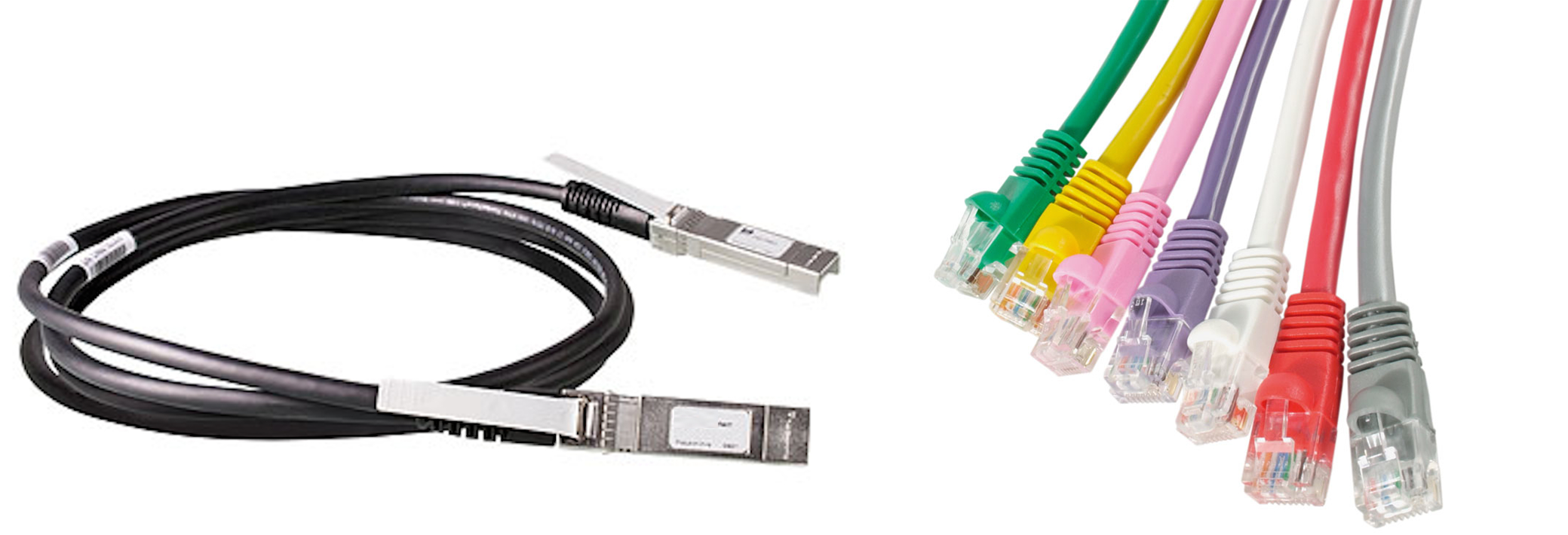The past few years have witnessed the extensive adoption of 10Gbps connectivity at data center equipment. The expansion 10 Gigabit Ethernet is supposed to satisfy the increasing demand for higher-performance servers, storage and interconnects. Since 10G network generally provides both optical and copper options, here comes the challenge for every IT technician: how to select the appropriate 10G connectivity solution? And could it be able to support data center deployments and trends concerning current situation and the future? In this article, we will compare 10GBASE-T and SFP+ options, and try to offer some help.

Options for 10G Network Connectivity
Two of the most widely used methods of connecting servers and storage to switches of 10Gb Ethernet network are using 10GBASE-T and SFP+. Many IT technicians are now evaluating the 10GBase-T technology, with the fact that 10GBase-T is easier to deploy and cheaper than the alternative SFP+ technologies.
10GBASE-T Option
The wide usage of 10GBASE-T being implemented takes the form of embedded RJ45 port. The advantage of which is that it allows users to capitalize on their existing Cat6a UTP structured cabling ecosystem. But the solution with embedded 10GBASE-T RJ45 ports lacks flexibility. And those unused ports still consume power thus resulting in higher operating cost.

SFP+ Option
For 10Gb/s data rates, SFP+ direct attach cables (DACs) are implemented as a fixed length of Twinax cable with SFP+ plugs integrated at both ends. Passive versions can be used for connections up to 7m and active versions for connectivity up to 15m. A DAC is a low power, low latency connection with flexibility. But it can be difficult to install through typical cable management. The difficulty increases with DAC length. Moreover, a DAC can be an expensive alternative as it does not take the advantage of the installed Cat6a structured cabling.

Comparison Between 10GBASE-T and SFP+
Comparing Power and Latency
Advancements allow switch manufacturers to significantly lower power consumption on 10GBASE-T server and switch ports. A range of 10GBASE-T switches with 1.5 to 4 W per port are available on the market depending on distance.
However, the SFP+ interface that has been widely deployed for 10 gigabit ToR switches continues to use less power, typically less than 1 W per port. It also offers better latency—typically about 0.3 microseconds per link. 10GBASE-T latency is about 2.6 microseconds per link due to more complex encoding schemes within the equipment.
Features lower power consumption and lower latency, SFP+ is well suited for large high-speed supercomputing applications where latency is a critical factor and where high port counts can add up to significant power savings.
Comparing Cost and Interoperability
The cost of 10GBASE-T technology has been driven down in the past years. And with 10GBASE-T rapidly becoming the de factor LOM technology, the use of SFP+ means an additional cost of adapters for the servers. In comparing one of the latest SFP+ and 10GBASE-T ToR switches, the cost of 10GBASE-T ranges from 20% to 40% less.
10GBASE-T also has the advantage of being an interoperable, standards-based technology that uses the familiar RJ45 connector. It provides backwards compatibility with legacy networks. While SFP+ solutions are limited with little or no backwards compatibility.
10GBASE-T can offer more design flexibility using a structured cabling approach for longer distances up to 100 meters, as well as shorter ToR switch-server connections using category 6A patch cords. A structured cabling approach means that Category 6A cables can be field terminated on patch panels to any length for clean, slack-free cable management. However, SFP+ DAC offers less than 10m distance, and they are factory terminated and must be purchased in pre-determined lengths.
10GBase-T advantages
- Lower deployment cost and easier to install and migrate
- Much longer reach, 100 meter vs. 8.5 meter
- Familiar RJ45 connectors and Cat 5/6/7 cables
- Use of patch panels and structured wiring
- Backward compatibility to 1 gigabit Ethernet or 100 megabit Ethernet
SFP+ DAC advantages:
- Significantly lower overall cost, when you include switch, NIC and cable
- Lower latency – 300 us per hop vs. 2.6 us per hop
- Lower power and lower heat
- Freely intermix fiber and DAC to meet distance requirements

Conclusion
When you have to choose between SFP+ and 10GBASE-T, the decision should be based on your need. SFP+ DAC match better for the requirements and emerging trends of today’s data center. 10GBase-T will be a better choice for wiring closet since the demand for bandwidth becomes more acute. For equipment that power consumption and lower latency are critical, SFP+ might more suitable. But If cost, flexibility and scalability are more vital, you may consider 10GBASE-T. Both of them should find an important place in the future of network design and best practices.
Originally published: http://www.fiber-optic-solutions.com/best-10g-solution-10gbase-t-sfp.html

No comments:
Post a Comment